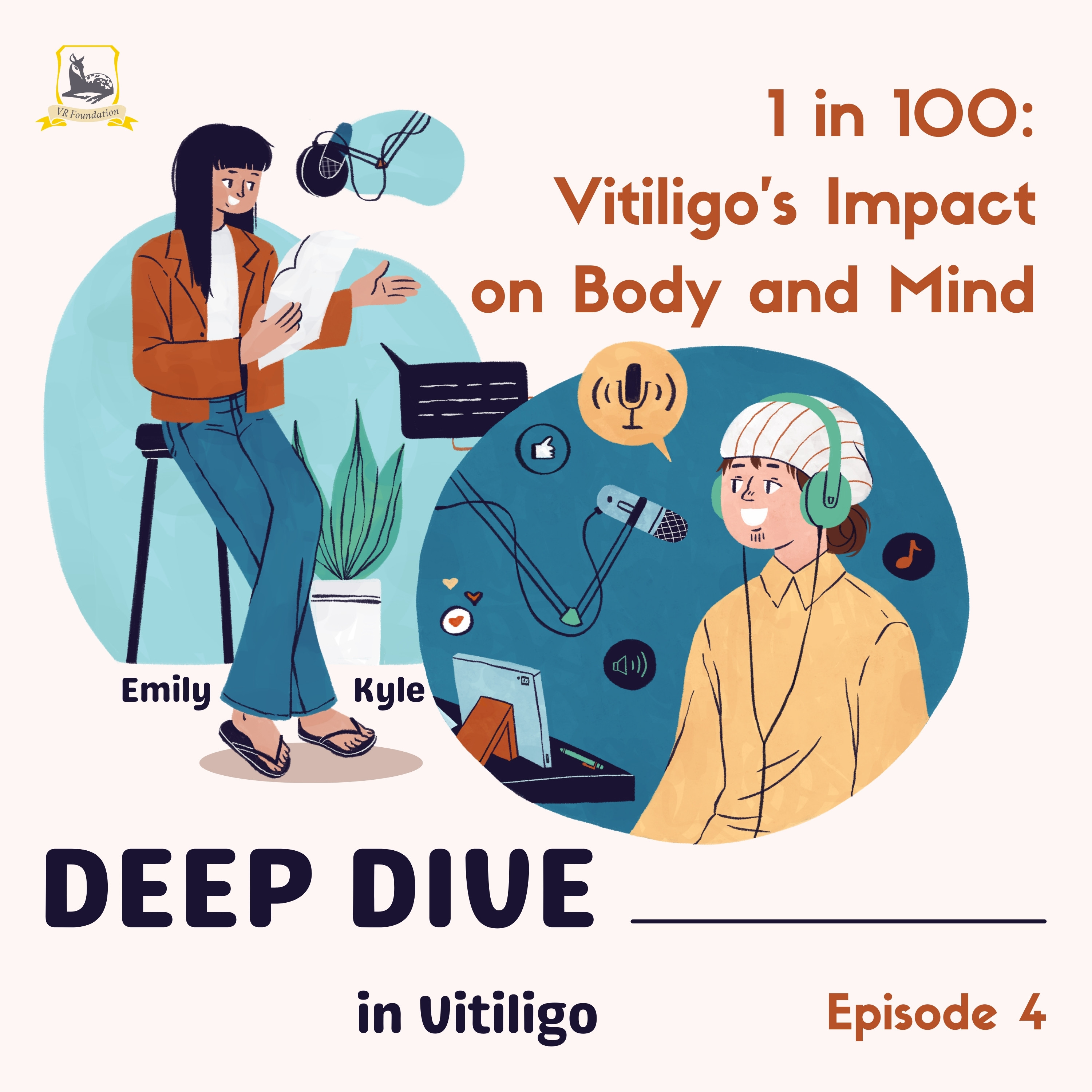Our work is entirely funded by private donations – we receive no money from government. Your money will help us continue funding research into vitiligo and supporting people affected by the condition.
Podcast
1 in 100: Vitiligo’s Impact on Body and Mind (Ep. 4)
Join us as we untangle the complexities of vitiligo treatment and its far-reaching effects on patients’ lives. From the frustrating trial-and-error of therapies like topical corticosteroids, calcineurin inhibitors, systemic steroids, and phototherapy to the emotional toll of the condition, we explore how vitiligo is far more than skin deep.
A recent study reveals that nearly 30% of people with vitiligo also have other autoimmune conditions like eczema, Hashimoto’s thyroiditis, or alopecia areata. This highlights the need to view vitiligo holistically, as it not only affects physical health but also significantly impacts mental well-being, contributing to higher rates of depression, anxiety, and insomnia.
We’ll also discuss why treatment outcomes vary for children and adults, the barriers many face in accessing care, and how vitiligo challenges our healthcare system to provide better, more comprehensive support. Beyond the science, we reflect on how to create a more inclusive and understanding world for those living with vitiligo, offering insights and hope for a brighter future.

FAQOther Questions
- Which is better for judging vitiligo — Wood’s lamp or dermoscopy?
A recent study out of India compared the two head-to-head. Both tools correlated fairly well with clinical criteria, but dermoscopy had a slight edge: Wood’s lamp: sensitivit...
- Белые пятна на теле? Витилиго?
Гид по Витилиго — ваш компас в лабиринте загадочной болезни и непростых решений. Здесь всё по-честному, по делу и на понятном языке. Вы найдёте здесь: Объяснения, что прои...
- Who is prone to vitiligo?
Vitiligo can affect anyone, regardless of gender, age, or race. Vitiligo prevalence is between 0.76% and 1.11% of the U.S. population, including around 40% of those with the con...
Though it is not always easy to treat vitiligo, there is much to be gained by clearly understanding the diagnosis, the future implications, treatment options and their outcomes.
Many people deal with vitiligo while remaining in the public eye, maintaining a positive outlook, and having a successful career.
Copyright (C) Bodolóczki JúliaBy taking a little time to fill in the anonymous questionnaire, you can help researchers better understand and fight vitiligo.